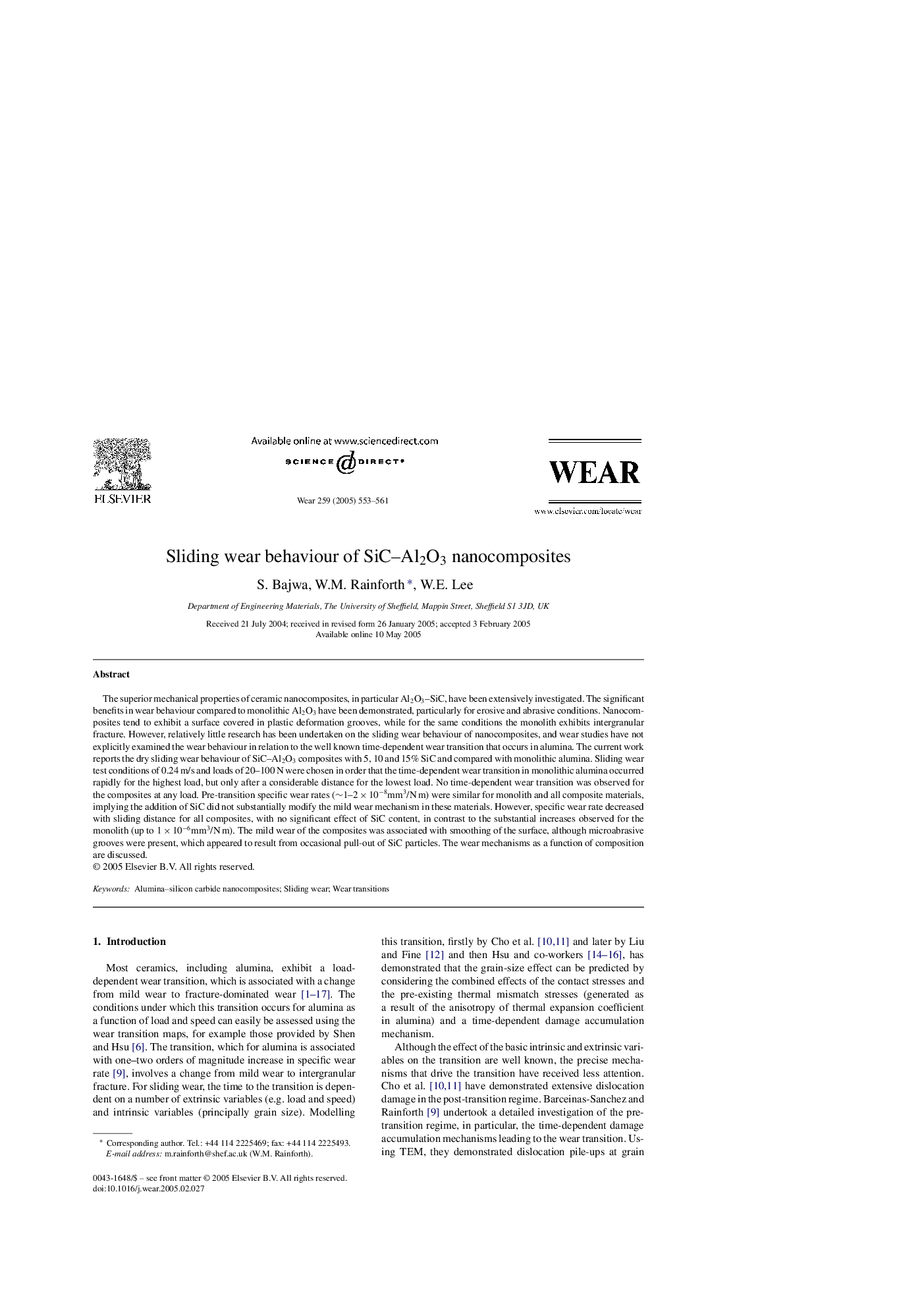| Article ID | Journal | Published Year | Pages | File Type |
|---|---|---|---|---|
| 9679454 | Wear | 2005 | 9 Pages |
Abstract
The superior mechanical properties of ceramic nanocomposites, in particular Al2O3-SiC, have been extensively investigated. The significant benefits in wear behaviour compared to monolithic Al2O3 have been demonstrated, particularly for erosive and abrasive conditions. Nanocomposites tend to exhibit a surface covered in plastic deformation grooves, while for the same conditions the monolith exhibits intergranular fracture. However, relatively little research has been undertaken on the sliding wear behaviour of nanocomposites, and wear studies have not explicitly examined the wear behaviour in relation to the well known time-dependent wear transition that occurs in alumina. The current work reports the dry sliding wear behaviour of SiC-Al2O3 composites with 5, 10 and 15% SiC and compared with monolithic alumina. Sliding wear test conditions of 0.24Â m/s and loads of 20-100Â N were chosen in order that the time-dependent wear transition in monolithic alumina occurred rapidly for the highest load, but only after a considerable distance for the lowest load. No time-dependent wear transition was observed for the composites at any load. Pre-transition specific wear rates (â¼1-2Â ÃÂ 10â8mm3/NÂ m) were similar for monolith and all composite materials, implying the addition of SiC did not substantially modify the mild wear mechanism in these materials. However, specific wear rate decreased with sliding distance for all composites, with no significant effect of SiC content, in contrast to the substantial increases observed for the monolith (up to 1Â ÃÂ 10â6mm3/NÂ m). The mild wear of the composites was associated with smoothing of the surface, although microabrasive grooves were present, which appeared to result from occasional pull-out of SiC particles. The wear mechanisms as a function of composition are discussed.
Keywords
Related Topics
Physical Sciences and Engineering
Chemical Engineering
Colloid and Surface Chemistry
Authors
S. Bajwa, W.M. Rainforth, W.E. Lee,
